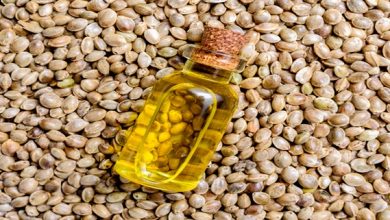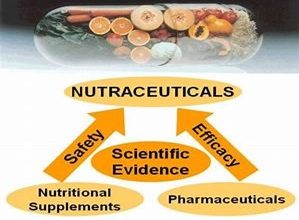The Science and Innovation Behind Leading Whey Protein Manufacturers
Whey Protein Manufacturers: An Informative Guide


Whey protein, a popular dietary supplement, is derived from milk during the cheese-making process. Renowned for its high protein content and rapid absorption, whey protein has gained significant traction among athletes, bodybuilders, and health enthusiasts. This article delves into the intricacies of whey protein manufacturing, providing a comprehensive guide to understanding the industry’s key players, production processes, quality considerations, and market trends.
The Significance of Whey Protein
Whey protein is celebrated for its impressive amino acid profile, particularly its high levels of branched-chain amino acids (BCAAs) like leucine, isoleucine, and valine. These amino acids are crucial for muscle repair and growth, making whey protein an essential supplement for those engaged in intense physical activities. Moreover, whey protein is easily digestible, facilitating rapid protein synthesis and recovery.
Key Players in the Whey Protein Manufacturing Industry
The whey protein industry is dominated by several major whey protein manufacturers who have established themselves as leaders through innovation, quality control, and extensive research. Some of the prominent players include:
- Glanbia Nutritionals: A global leader in whey protein production, Glanbia Nutritionals is known for its advanced manufacturing techniques and commitment to quality. They offer a wide range of whey protein products, including whey protein isolate, concentrate, and hydrolysate.
- Arla Foods Ingredients: This Denmark-based company is a subsidiary of Arla Foods, one of the world’s largest dairy cooperatives. Arla Foods Ingredients focuses on developing high-quality whey protein solutions tailored to various applications, from sports nutrition to clinical nutrition.
- Hilmar Ingredients: Based in the United States, Hilmar Ingredients specializes in the production of whey protein concentrates and isolates. They are recognized for their stringent quality control measures and sustainable manufacturing practices.
- Lactalis Ingredients: As part of the Lactalis Group, the largest dairy company globally, Lactalis Ingredients offers a diverse portfolio of whey protein products. Their expertise in dairy processing ensures consistent quality and innovation.
- Saputo Inc.: A Canadian dairy company, Saputo Inc. produces whey protein for both the food industry and sports nutrition market. Their focus on research and development has led to the creation of unique whey protein formulations.
The Whey Protein Manufacturing Process
The production of whey protein involves several critical steps to ensure the final product is of high quality and purity. The process begins with the collection of milk, followed by the separation of whey during cheese production. Here’s an overview of the key stages:
- Milk Collection and Cheese Production: Milk is collected from dairy farms and transported to cheese manufacturing facilities. During cheese production, milk is curdled using enzymes or acids, resulting in the formation of curds and whey. Whey is the liquid by-product that is separated from the curds.
- Whey Filtration: The whey is then subjected to filtration processes such as microfiltration, ultrafiltration, and diafiltration to concentrate the protein content. These processes remove fats, lactose, and other impurities, resulting in a higher protein concentration.
- Drying: The concentrated whey protein is further processed to remove water, typically through spray drying. This process converts the liquid whey protein into a fine powder, making it more convenient for packaging and distribution.
- Additional Processing (Isolate and Hydrolysate): To produce whey protein isolate (WPI) and whey protein hydrolysate (WPH), additional processing steps are involved. WPI undergoes further filtration to achieve a protein content of 90% or higher. WPH is partially hydrolyzed, breaking down the protein into smaller peptides for faster absorption.
- Quality Control and Testing: Throughout the manufacturing process, rigorous quality control measures are implemented to ensure the whey protein meets industry standards and regulatory requirements. This includes testing for protein content, purity, microbial contamination, and amino acid profile.
Quality Considerations in Whey Protein Manufacturing
Quality is paramount in whey protein manufacturing, as it directly impacts the efficacy and safety of the final product. Key quality considerations include:
- Protein Content and Purity: High-quality whey protein should have a high protein content with minimal fats, carbohydrates, and lactose. This is typically achieved through advanced filtration techniques.
- Amino Acid Profile: The presence of essential amino acids, particularly BCAAs, is crucial for the product’s effectiveness. Manufacturers must ensure their whey protein contains an optimal balance of these amino acids.
- Microbial Safety: Whey protein products must be free from harmful microorganisms. Strict hygiene practices and regular microbial testing are essential to prevent contamination.
- Solubility and Taste: The solubility of whey protein powder affects its usability in various applications. Additionally, a pleasant taste is important for consumer acceptance. Manufacturers often use flavoring agents and other additives to enhance taste and mixability.
- Labeling and Transparency: Accurate labeling is vital for consumer trust. Manufacturers should provide clear information about the protein content, ingredients, and potential allergens on their product labels.
Market Trends and Innovations
The whey protein market continues to evolve, driven by increasing consumer demand for protein-rich products and advancements in manufacturing technologies. Key trends and innovations include:
- Sustainability Initiatives: Many manufacturers are adopting sustainable practices to reduce their environmental footprint. This includes using renewable energy sources, optimizing water usage, and minimizing waste.
- Organic and Grass-Fed Whey: There is a growing demand for organic and grass-fed whey protein, perceived as healthier and more environmentally friendly. These products are made from milk obtained from cows raised on organic farms without the use of synthetic hormones or antibiotics.
- Functional and Specialized Whey Proteins: Manufacturers are developing whey protein formulations tailored to specific needs, such as weight management, immune support, and muscle recovery. These specialized products often contain additional ingredients like probiotics, vitamins, and minerals.
- Innovative Delivery Formats: Beyond traditional powders, whey protein is now available in various formats, including ready-to-drink beverages, bars, and snacks. These convenient formats cater to busy lifestyles and on-the-go consumption.
- Research and Development: Ongoing research in whey protein continues to uncover new benefits and applications. Innovations in processing technologies are also enhancing the quality and functionality of whey protein products.
Conclusion
Whey protein manufacturers play a critical role in meeting the growing demand for high-quality protein supplements. By leveraging advanced technologies, stringent quality control measures, and a commitment to innovation, these manufacturers ensure that consumers receive effective and safe products. Understanding the manufacturing process, quality considerations, and market trends can help consumers make informed choices and appreciate the value of whey protein in their dietary regimen. Whether for athletic performance, muscle building, or overall health, whey protein remains a cornerstone of nutritional supplementation.










